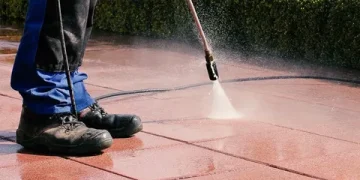Pressure wash surface cleaners are indispensable tools for homeowners and professionals who want to clean large surfaces quickly and efficiently. These attachments help deliver consistent results while saving time and water. However, like any equipment, they require proper maintenance to perform at their best and last for years.
In this guide, we’ll explore the best maintenance practices to keep your pressure wash surface cleaners in top condition and prevent costly repairs or premature failure.
1. Clean After Every Use
After each cleaning session, rinse your surface cleaner thoroughly with clean water. Dirt, grime, and detergent residue can clog nozzles or wear down components over time. Be sure to:
- Flush the spray nozzles and rotary arms
- Rinse off the housing and skirt
- Wipe down metal components to prevent corrosion
2. Inspect for Wear and Damage
Regular inspections are key to catching issues before they become major problems. Look for:
- Worn or damaged nozzles
- Cracked or leaking swivel joints
- Bent rotary arms
- Loose or missing fasteners
Replacing worn parts promptly ensures consistent cleaning performance and reduces strain on your pressure washer.
3. Lubricate Moving Parts
The rotary swivel is one of the most critical components of pressure wash surface cleaners. To maintain smooth rotation and prevent seizing:
- Apply a few drops of light machine oil or silicone-based lubricant to the swivel joint
- Avoid over-lubrication, which can attract dirt and debris
4. Protect From Freezing Temperatures
If you’re operating in colder climates, never store your pressure wash surface cleaner with residual water inside. Freezing can damage internal seals and metal components. After use:
- Drain all water completely
- Store in a dry, temperature-controlled space
- Consider adding a pump saver or antifreeze solution for winter storage
5. Use the Correct PSI and GPM Ratings
Ensure your surface cleaner is compatible with your pressure washer’s PSI and GPM. Using equipment outside the recommended range can lead to damage or poor performance. Check the user manual for:
- Maximum and minimum pressure limits
- Flow rate (gallons per minute) requirements
6. Avoid Rough Handling
While many pressure wash surface cleaners are built for rugged use, treat them with care:
- Don’t drag or drop the unit when not in use
- Avoid running over rough or uneven surfaces unnecessarily
- Store the unit upright to protect the rotary arms and nozzles
7. Clean and Replace Nozzles Periodically
Nozzles can become clogged or wear out over time. Clean them regularly using:
- A fine needle or nozzle cleaning kit
- Vinegar or a descaling solution to dissolve mineral deposits
If performance drops or spray patterns become uneven, replace the nozzles.
8. Check the Skirt or Splash Guard
The skirt helps contain water and debris during operation. A damaged or missing skirt can reduce efficiency and increase splash-back. Make sure:
- The skirt is securely attached
- There are no tears or significant wear
- Replace as needed for optimal performance
Conclusion
Proper maintenance of your pressure wash surface cleaners not only extends the life of your equipment but also ensures you get the best possible cleaning results every time. With a simple post-use routine and regular inspections, you can avoid downtime and protect your investment for years to come.
Whether you’re a weekend warrior or a professional cleaner, following these best practices will keep your gear running like new.









